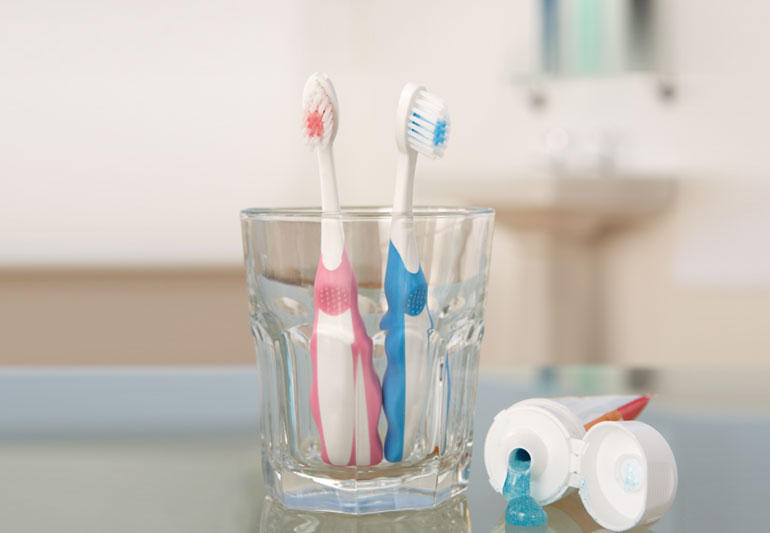What Diseases Can You Get from Sharing a Toothbrush
We all know that sharing is caring, but sometimes sharing can be downright dangerous. Case in point: sharing a toothbrush. You may think that because you brush your teeth with your toothbrush every day, it’s clean and safe to share.
Unfortunately, that’s not the case. Here are just a few of the diseases you can contract from sharing a toothbrush with someone else.
We all know that sharing is caring, but when it comes to sharing a toothbrush, you might want to think twice. That’s because swapping spit with someone else’s toothbrush can lead to the transfer of harmful bacteria and even diseases.
Here are some of the illnesses you could pick up from using someone else’s toothbrush:
1. Gum disease – Gingivitis, or early stage gum disease, is caused by plaque buildup on teeth. When you share a toothbrush with someone who has gingivitis, you increase your risk of developing the condition yourself.
2. Cold – If you share a toothbrush with someone who is sick with a cold or other respiratory infection, you could end up getting sick too.
3. Flu – The flu virus can live on surfaces for 48 hours or more, so if you use a toothbrush that has been used by someone with the flu, you could become infected.
4. Staph infection – Staphylococcus bacteria can cause skin infections like MRSA (methicillin-resistant Staphylococcus aureus). If these bacteria get into your bloodstream through cuts or scrapes in your mouth, they can cause serious illness.
Sharing a toothbrush with someone who has a staph infection increases your risk of becoming infected as well.

Credit: health.clevelandclinic.org
Can You Get Sick from Sharing a Toothbrush
Yes, it is possible to get sick from sharing a toothbrush. While the risk is relatively low, it can happen if you share a toothbrush with someone who is sick. If you use a toothbrush that has been contaminated with bacteria or viruses, you could end up getting sick yourself.
There are a few ways that sharing a toothbrush can lead to illness. First, if the person you share your toothbrush with is sick, their saliva can contain harmful bacteria or viruses. These can then transfer to your own mouth and make you sick.
Second, even if the person you share your brush with isn’t currently ill, they may have been recently and their brush could still contain traces of harmful bacteria or viruses. Finally, if you share a toothbrush holder or case, this too can become contaminated and Spread illness-causing germs to your own brush.
To avoid getting sick from sharing a toothbrush, it’s best to just not do it!
If you must share (for example, when travelling), be sure to clean the brush thoroughly before using it yourself and always rinse out the holder/case as well.
Diseases That Can Be Spread Through Sharing a Toothbrush Include Gingivitis, Periodontitis, Hepatitis C, And Hiv
If you share a toothbrush with someone, you’re also sharing bacteria, saliva, and possibly viruses. This can increase your risk of developing certain diseases or infections.
Gingivitis is a common form of gum disease that is caused by plaque buildup on the teeth.
If not treated, gingivitis can lead to periodontitis, which is a more serious form of gum disease.
Hepatitis C is a virus that can cause liver damage and is usually spread through contact with blood or bodily fluids. Sharing a toothbrush with someone who has hepatitis C can increase your risk of contracting the virus.
HIV is a virus that attacks the body’s immune system and can lead to AIDS. HIV is usually spread through sexual contact or contact with blood or bodily fluids. Sharing a toothbrush with someone who has HIV can increase your risk of contracting the virus.
4 SHOCKING diseases you can get if you share your toothbrush with someone
Accidentally Shared Toothbrush Hiv
If you’re like most people, you probably don’t give much thought to your toothbrush. But did you know that sharing a toothbrush with someone else can put you at risk for contracting HIV?
That’s right – if someone who is infected with HIV uses a toothbrush and then passes it on to someone else, there is a chance that the virus will be transmitted.
The same is true for other blood-borne diseases such as hepatitis B and C.
So what should you do if you accidentally share a toothbrush with someone? The best thing to do is to throw away the brush and get a new one.
If you can’t do that, then make sure to thoroughly clean the brush with soap and water before using it again.
And remember – never share a toothbrush with anyone else!
Can You Get an Std from Sharing a Toothbrush
Yes, you most definitely can get an STD from sharing a toothbrush. In fact, any type of close contact with someone who has an STD can put you at risk for infection. This is because STDs are spread through bodily fluids like blood and saliva, which can easily be transferred through sharing personal items like toothbrushes or razor blades.
If you have any cuts or open sores on your gums, the risk of infection is even higher. So if you must share a toothbrush with someone, make sure to sterilize it thoroughly afterwards to prevent yourself from getting sick.
I Accidentally Used Someone Else Toothbrush
We’ve all been there. You reach for your toothbrush in the morning, only to realize you used someone else’s last night. Whether it was your significant other, roommate, or child, using someone else’s toothbrush is not as uncommon as you might think.
But what are the risks associated with using someone else’s toothbrush?
While sharing a toothbrush may not be the most sanitary thing to do, it is generally considered safe. The biggest risk associated with using someone else’s toothbrush is transferring bacteria from their mouth to yours.
This can lead to an increased risk of developing cavities or gum disease. However, if you regularly brush and floss your teeth, the risk of developing these problems is relatively low.
If you do accidentally use someone else’s toothbrush, there are a few things you can do to minimize the risk of infection.
First, make sure to thoroughly rinse both your mouth and the toothbrush before using it. You should also avoid sharing any other personal hygiene products, such as razors or combs, with anyone else. Finally, be sure to clean your own toothbrush thoroughly after each use to prevent cross-contamination.
How Long Does Bacteria Live on Toothbrush
We all know that we are supposed to brush our teeth at least twice a day, but how often do we really think about the bacteria that is living on our toothbrush? It might surprise you to learn that there can be millions of bacteria living on your toothbrush right now! So, how long do these bacteria survive on your toothbrush and what can you do to prevent them from making themselves at home in your mouth?
The answer to how long bacteria can live on your toothbrush depends on the type of bacteria. Some types of bacteria can survive for weeks or even months, while others will only last a few days. The key to preventing bacterial growth on your toothbrush is to make sure that it is cleaned properly after each use.
You should rinse your toothbrush thoroughly with water and then allow it to air dry. Alternatively, you could also soak your toothbrush in an antibacterial solution between uses.
So, there you have it!
A little bit of information about the bacteria that might be living on your toothbrush right now. Just remember to keep it clean and you’ll be able to avoid any unwanted guests in your mouth!
Conclusion
If you share a toothbrush with someone, you’re essentially sharing all of the bacteria that’s on that toothbrush. This can lead to some serious diseases, including:
1. Gum disease – When bacteria gets into your gums, it can cause them to become inflamed and bleed easily.
This can lead to gum disease, which is a serious infection of the gums.
2. Tooth decay – Bacteria on your toothbrush can also lead to tooth decay. This happens when the bacteria eat away at the enamel on your teeth, causing them to weaken and eventually break down.
3. Oral thrush – Oral thrush is a fungal infection that commonly affects babies and young children, but it can also affect adults if their immune system is weakened or they share a toothbrush with someone who has it. Symptoms include white patches in the mouth and throat, as well as redness and soreness.






